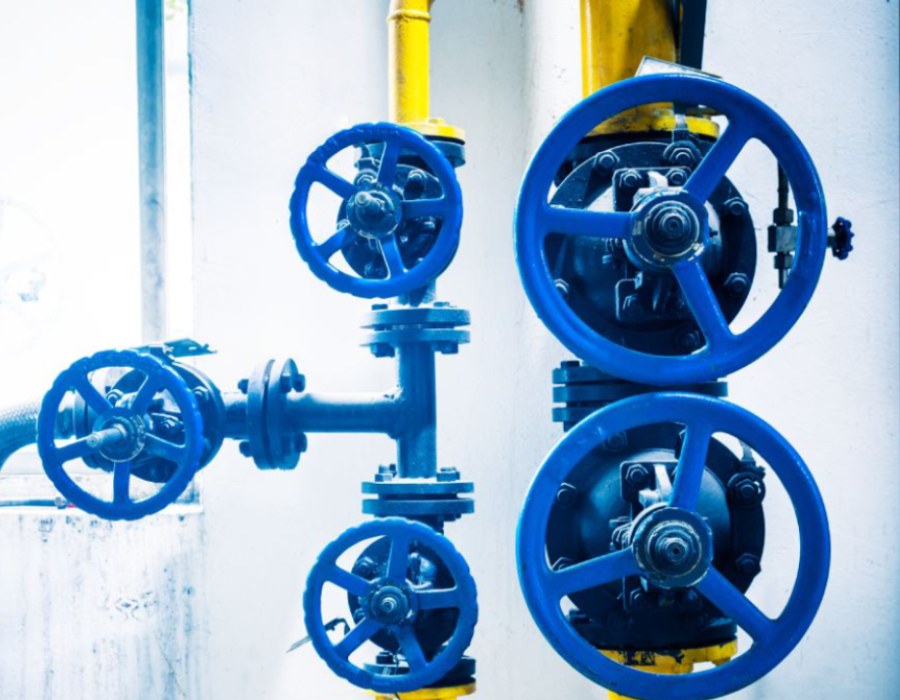Cryogenic valves, as cold as snow.
Cryogenic valves are specifically designed for cryogenic applications (extremely cold environments) and are commonly utilized by industries such as petrochemicals and oil & gas which handle liquefied or compressed natural gas (LNG) (CNG).
Learn how CNC machining has perfected the manufacturing of cryogenic valves, enabling their application in various types and industrial uses.
Liquefied natural gas is produced by the liquefaction process, in which natural gas is cooled to -260 degrees Fahrenheit (-162 degrees Celsius) to become a liquid. This process reduces the volume of natural gas by 600 times, making it easier and safer to transport and store. Compressed natural gas, on the other hand, is obtained by compressing natural gas under high pressure to take up less space. Both industries use these forms of gas for different processes and applications.
These valves are able to operate effectively at temperatures as low as -320 degrees Fahrenheit and at pressures as high as 750 psi.
Cryogenic valves play a fundamental role in various industries where handling fluids at extremely low temperatures is required. To ensure their precise and efficient operation, it is essential to have high-quality components manufactured with cutting-edge technology. In this regard, the Trevisan Machining Center stands out as an essential resource that contributes to the production of precision cryogenic valves.
Additionally, they are often used to transport and store certain types of gases that require more than just pressure to compress them. Cryogenic valves are distinct from other standard valves as they are engineered to function in these extremely low temperature conditions.
In the context of cryogenic valves and their operation, it is crucial to recognize the impact of Industry 4.0 and the CNC Machining Revolution. These technological advancements are transforming the way valves are designed, manufactured, and utilized in cryogenic environments. From optimizing manufacturing processes to improving the precision and quality of components, the integration of Industry 4.0 and CNC Machining is redefining standards in the cryogenic valve industry.
It is fundamental to highlight the importance of energy efficiency in industrial valves, especially in the context of cryogenic valves used in low-temperature applications. Energy efficiency in cryogenic valves becomes a critical aspect as these operate under extremely cold conditions, where energy conservation is paramount. These valves are designed to ensure tight sealing and controlled fluid flow at extremely low temperatures, making them pivotal in industries such as scientific research, medicine, and aerospace. Optimizing energy efficiency in cryogenic valves not only reduces energy consumption in these applications but also ensures reliable and precise operation in low-temperature environments, which is essential for the success of numerous processes and experiments in these industries.
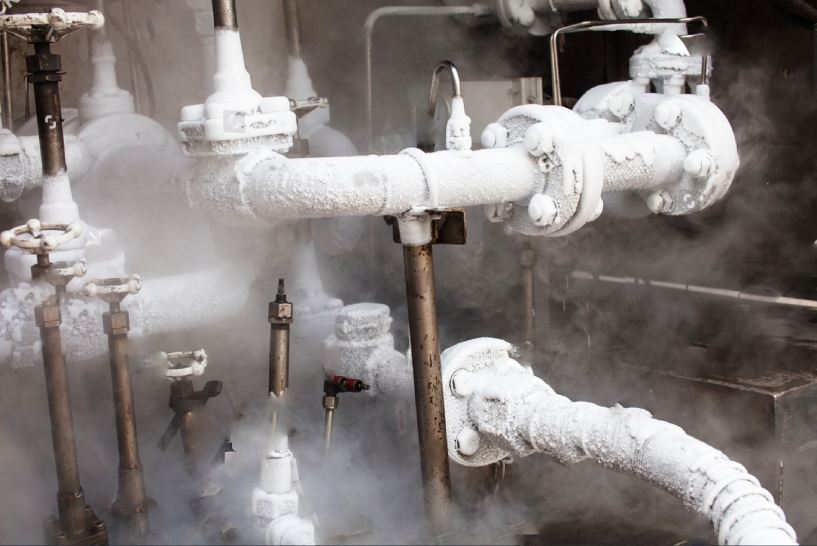
How cryogenic valves maintain temperature in industrial processes.
Cryogenic valves are essential components for industrial processes that require cryogenic cooling. Their main function is to regulate the flow of cryogenic gas so that it can enter and exit the system.
These valves are designed to operate at cryogenic temperatures, making them ideal for applications that require cryogenic cooling, such as in the food industry, medicine and scientific research.
The operation of the cryogenic valve is based on the use of interlocking springs and shutters to regulate the flow of cryogenic gas.
When gas enters the system, the shutter opens to allow gas flow and closes to stop flow. A temperature control mechanism detects the temperature of the system and adjusts the shutter position accordingly to maintain temperature within a specific range.
This is especially important in industrial processes where precise temperatures are critical to the success of the process, such as in the manufacture of semiconductor materials or the manufacture of food and pharmaceutical products. The cryogenic valve not only regulates the flow of cryogenic gas, but also regulates the pressure within the system. This is done using a pressure control valve that maintains pressure at a constant level.
This is important in applications where a constant flow of cryogenic gas is required, such as in the manufacture of frozen foods or the manufacture of high-technology materials.
In conclusion, cryogenic valves are essential components for industrial processes that require cryogenic cooling. Their ability to regulate the flow and pressure of cryogenic gas, as well as their ability to operate at cryogenic temperatures, makes them ideal for applications where temperature precision and flow stability are crucial. This allows companies to ensure optimal performance and high-quality production in their industrial processes.
Types of Cryogenic Valves.
The Cryogenic´s Market has a wide variety of cryogenic valves, among which we can find five different types with specific characteristics for use in different processes and conditions.
- Globe valves.
Called this way because of their spherical shape, these valves have an internal movable disk – the shutter – that rotates 90 degrees to the plane of its coordinated seat. These cryogenic valves offer greater reliability for long-term sealing performance, but are susceptible to moisture and are not good in situations where flow is paramount.
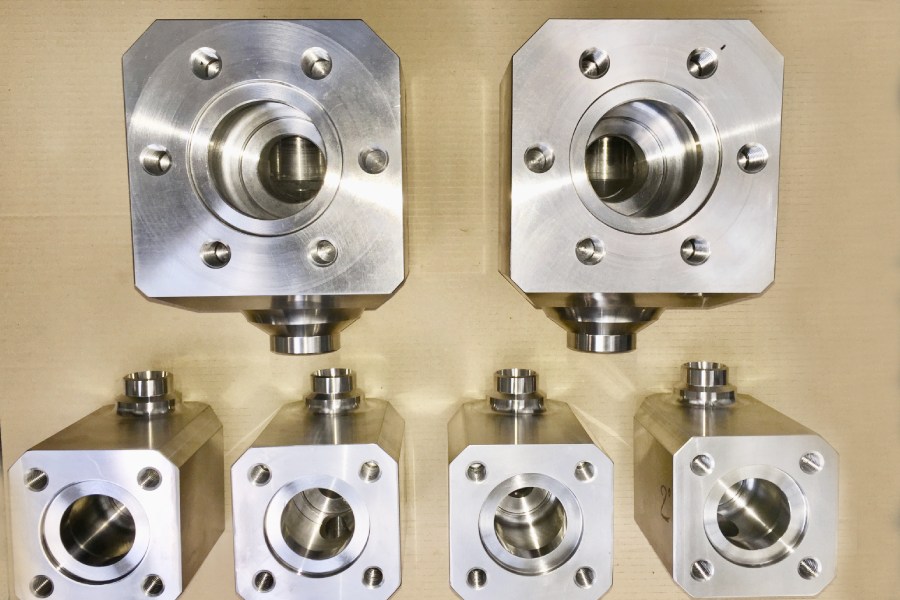
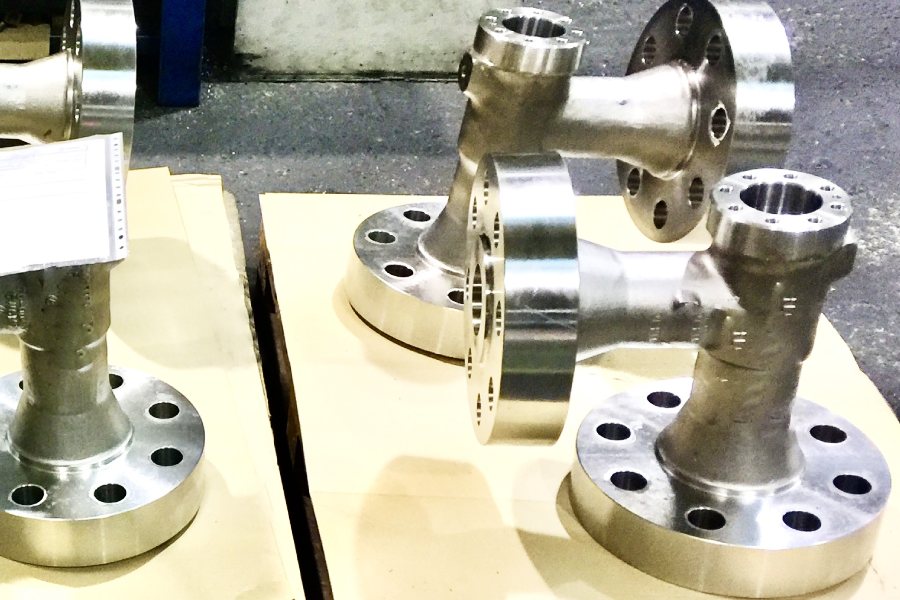
- Ball valves.
These valves use a ball as a shutter and generally include a polytetrafluoroethylene body seat. They have better flow characteristics than globe valves, but are more prone to wear on their seals and the ball itself. Therefore, they are more valuable for applications where unrestricted flow is required
- Top-entry ball valves.
Similar to standard ball cryogenic valves, this new model has a one-piece design with top-welded connections that facilitates maintenance. The lack of mechanical joints also makes it a preferred option in fire-safe applications.
- Gate valves.
Gate valves use a wedge-type gate as a shutter that swings to close parallel to the body seat. They are similar to ball valves in that they offer good flow characteristics, but are hindered by wear.
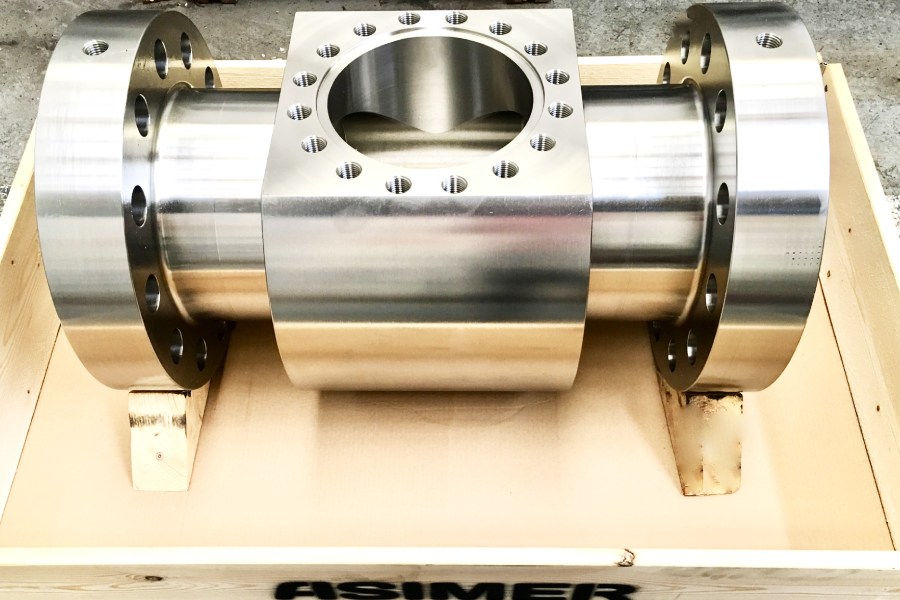
- Butterfly valves.
Butterfly valves use a circular disk in the center. This disk allows cryogenic butterfly valves to be shorter in length than the aforementioned options, making them lighter and cheaper, as well as quick and easy to operate.
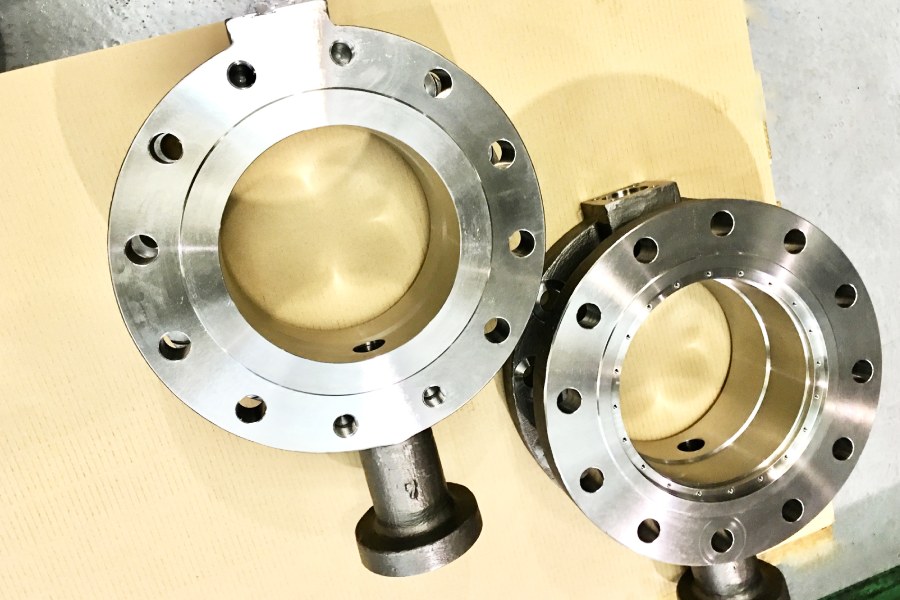
Cryogenic gases are extremely sensitive, and an inadvertent leak can cause excessive damage and serious risks. Standard valves contract and expand at different speeds and, therefore, when exposed to cold or hot temperatures, they can develop cracks in the seal resulting in leaks.
Cryogenic valves are generally kept at a constant temperature using a refrigeration system. The constant temperature ensures that the valve does not contract or expand, preventing leaks from developing.
Where are cryogenic valves used?
Cryogenic valves are primarily found in industrial facilities to take advantage of the benefits of undergoing processes at cryogenic temperatures, but there are other industries and sectors that also employ these valves. Here are some common applications of cryogenic valves:
- Liquefied natural gas (LNG) plants
- LNG terminals
- LNG transportation systems
- Food and beverage industries
- Air separation plants
- Steel production plants
- Medical/laboratory industry
- Chemical and petrochemical plants
- Aerospace storage facilities
Oil and gas industry.
Cryogenic valves are used to control liquefied gases such as liquid nitrogen, methane, and helium. Due to the ease and safety of non-pressurized storage and transportation, these elements are cooled to cryogenic temperatures, so they remain in a liquid state. As a result, larger volumes can be transported or stored for some time, while the piping system operates at much lower pressure levels. Before cooling these gases into liquid, it is necessary to remove condensate, moisture, CO2, and H2S to avoid downstream corrosion problems.
Food and beverage industry.
Cryogenic valves are widely used in factories that deal with processed foods and beverages. These items are transferred to and from a freezer using cryogenic pipes and valves.
Air separation plants.
Different gases in the air are separated using various pressure techniques. Cryogenic valves are widely used in such plants.
Steel production plants.
Cryogenic valves and accompanying equipment are commonly found.
Medical/laboratory industry.
The scope of cryogenic valves is constantly expanding and they are even used in the medical industry. They can be found in pipes that transmit gases such as oxygen and also in storage spaces that house medical instruments. Another area of use is in freezing biotechnological products such as vaccines.
Chemical and petrochemical plants.
Cryogenic valves are used in chemical and petrochemical plants to control the flow of cryogenic gases such as nitrogen, oxygen and helium. These gases are used in processes such as cleaning, feeding and cooling, and their low temperatures and high pressures require special valves.
Cryogenic valves must withstand extreme conditions, such as corrosion, freezing and high flow rates, and must be manufactured accurately to ensure precise flow rates. In addition, they should be easily accessible for maintenance and repair in case of breakdown. Ultimately, cryogenic valves are essential in chemical and petrochemical plants to ensure the safe and efficient operation of cryogenic processes.
Aerospace storage facilities.
In the aerospace industry, cryogenic fuels have gained wide acceptance over the years. Liquid hydrogen and liquid oxygen often serve as propellants for space shuttles, either alone or in combination with aircraft fuel. The presence of cryogenic valves is a necessity in such systems.
Cryogenic valves at Asimer Group.
The growing demand for Industrial Technical Gases and LNG (Liquefied Natural Gas), combined with the high demands of the industry, make it necessary to use cryogenic valves that solve both the technical and economic aspects with regard to the cryogenic industry.
Cryogenic Valves are BASIC elements for many industries where cryogenic techniques are used. The growth of demand in LNG, as a result of the increase in global energy demand, makes visible the need to invest in development and research in cryogenic valves to be able to adapt to different industries and their demands.
Leading market companies make it clear that there is a growing trend in the use of this technology. This responds to the increase in the consumption of industrial gases (Oxygen, Nitrogen, Argon, Xenon, and Krypton). Due to the process of obtaining and subsequent storage of these gases, they are liquefied, allowing for increased storage capacity and reducing storage and logistics costs. All this process is only viable thanks to cryogenic techniques and processes.
At Asimer Group, much of the Welding Procedures are performed with probes previously subjected to Charpy Tests at -197ºC, which guarantee the welded joints at these temperatures according to ASME IX and UNE-EN ISO 15614-1 standards.
Due to the extreme conditions that the valves are subjected to during these cryogenic processes, the production materials are of first quality, ductile but not fragile, such as high quality stainless steel, as well as nickel and copper alloys, such as bronze, and the pressures and technical details of cryogenic valves are outstanding within the different applications and processes.
At Asimer Group, the demand for projects with cryogenic valve components (mainly bodies and covers) is increasing and allows Asimer to increase its knowledge within this sector, hand in hand with its most important clients.
The diversity and typology of cryogenic valves is increasing and these cryogenic processes tend to be more standardised, meeting already established designs and regulations, and must be perfectly dimensioned to avoid unexpected costs, by replacement or poor installation of valves and thus ensure the maximum service life of the same.
The cryogenic valves are essential components in a wide range of industries, from the petrochemical industry to aerospace, and play a crucial role in regulating cryogenic gases, ensuring efficiency and safety in handling these fluids in industrial applications, particularly in the industrial valve industry.

